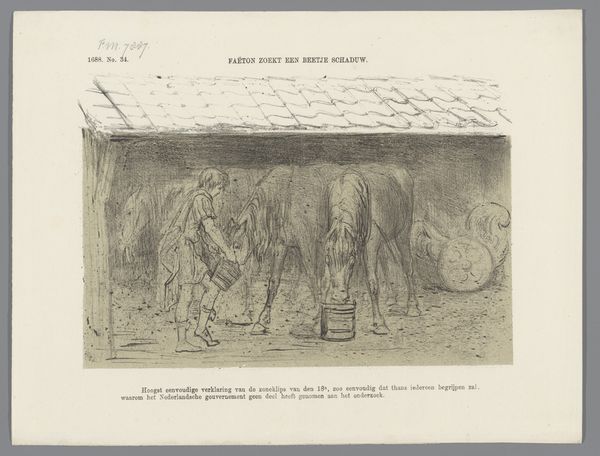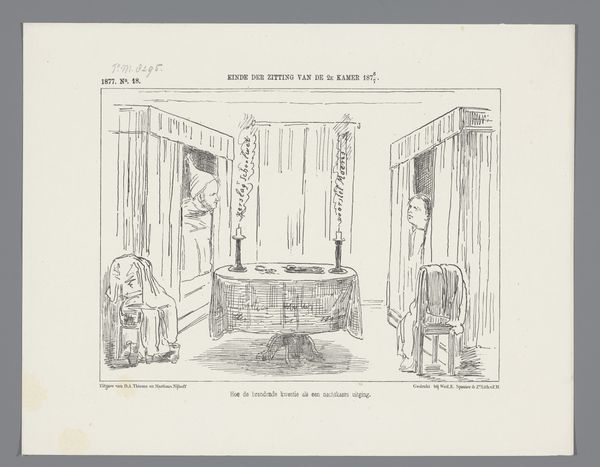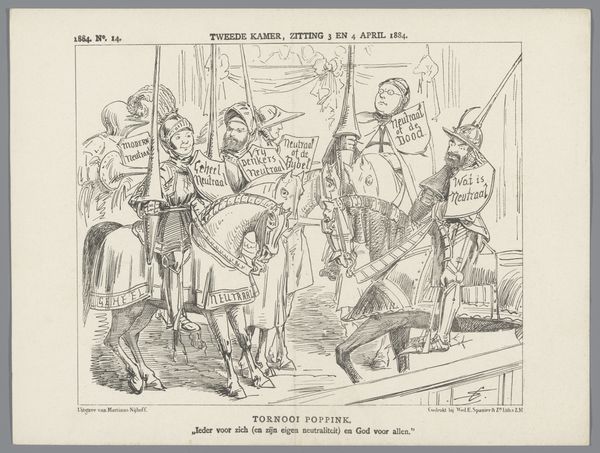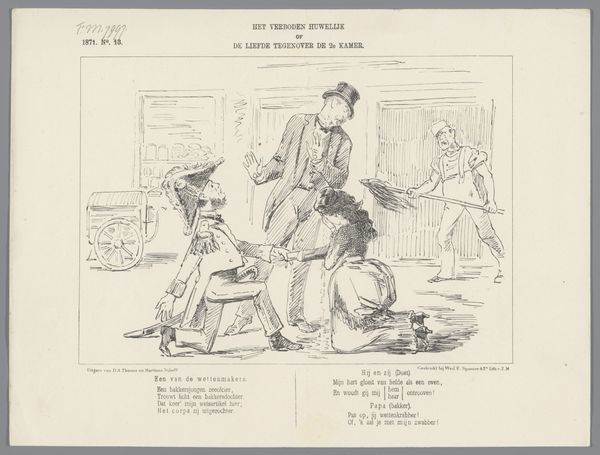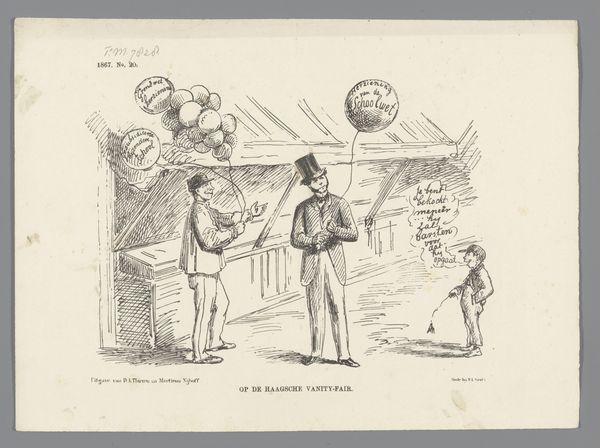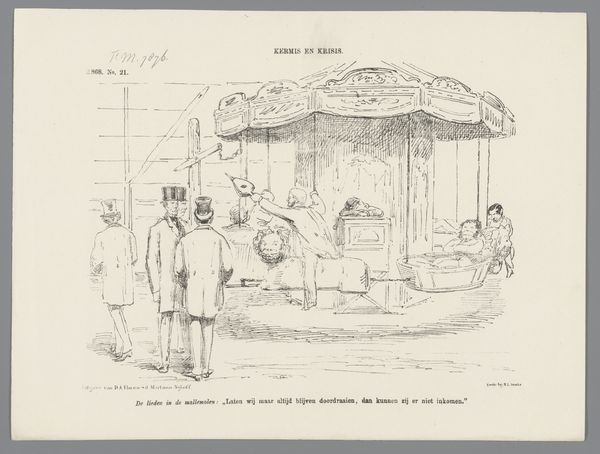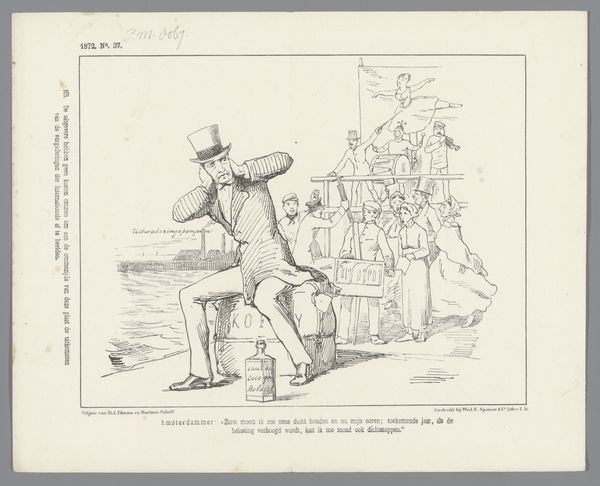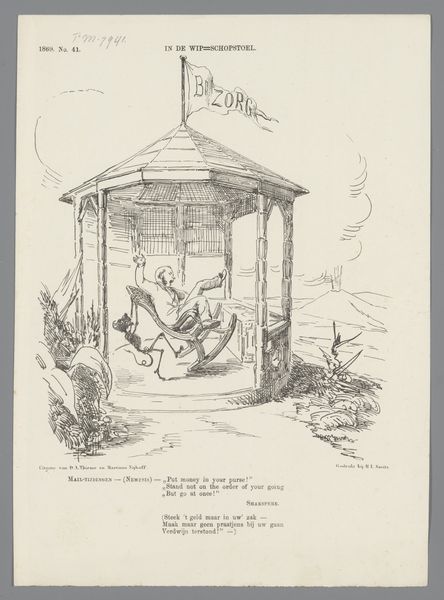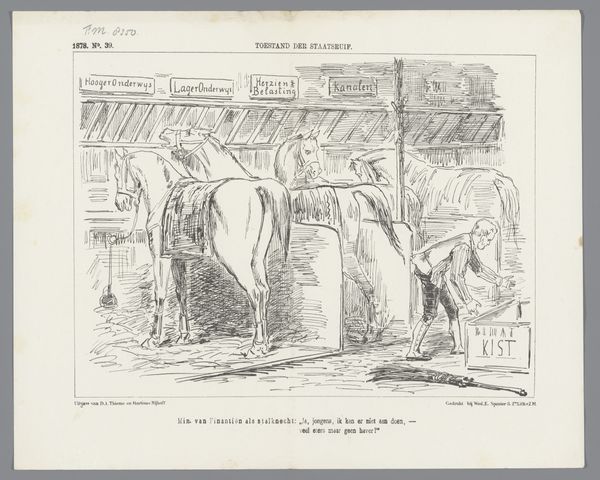
Spotprent op de oppositie tegen het wetsontwerp op de landsverdediging, 1875 1875
0:00
0:00
drawing, lithograph, print, ink
#
drawing
#
lithograph
# print
#
caricature
#
cartoon sketch
#
ink
#
history-painting
#
academic-art
Dimensions: height 215 mm, width 275 mm
Copyright: Rijks Museum: Open Domain
Curator: This lithograph, a print called "Spotprent op de oppositie tegen het wetsontwerp op de landsverdediging, 1875" by Johan Michaël Schmidt Crans from 1875, is striking, wouldn’t you say? I'm immediately drawn to its use of simple lines to convey a rather complex political message. Editor: It really does feel complex! There's a lot going on with the figures and the carousel imagery. It gives off this satirical vibe, but I'm unsure what it’s actually saying. How would you interpret this work? Curator: For me, this work is less about deciphering a hidden symbolic meaning, and more about understanding the means of production and its cultural context. It was made through lithography, a relatively affordable process at the time that allowed for mass distribution of such commentary. What does that tell you about the intended audience, or the artist's motivation? Editor: Well, mass distribution suggests that the artist was hoping to sway public opinion and possibly reach people outside of the typical art circles. It was about getting the message across, fast. Curator: Exactly. The materials—ink and a relatively inexpensive printing method—speak to a purpose beyond pure aesthetic value. This was a form of visual activism, wouldn't you say? The content of the image reinforces this idea; it addresses land defense policy. Editor: It seems so obvious now. Focusing on production and accessibility clarifies so much about its purpose. Were lithographs like this a common way to engage in political debate? Curator: Indeed, such prints facilitated discussions within a broader social and political sphere. They were crucial to public discourse. And consider this: where do you think this piece may have originally been seen? A gallery wall, or somewhere else entirely? Editor: I'd wager that it wasn't meant for a gallery. More likely, it appeared in a newspaper or broadside, alongside other political commentaries. I see it's been enlightening to view it through a material lens rather than focusing solely on artistic intention. Curator: Absolutely. Seeing art in the context of its material production gives us critical insights into its purpose and impact. I'm glad that we've reached this point of appreciation!
Comments
No comments
Be the first to comment and join the conversation on the ultimate creative platform.

